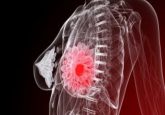Luminescent peptide could pave the way for personalized chemotherapy
Scientists at The Ohio State University (OH, USA) have successfully tracked the path of a chemotherapy drug in real time and at a cellular level. The team were able to locate the drug and measure the time taken to reach the cellular target.
This novel accomplishment, which builds on the success of Ohio State’s 2008 Nobel Prize in Chemistry (the discovery and development of the green fluorescent protein GFP), could help doctors to identify which cancer patients will respond better to chemotherapy.
In the study, published recently in Nature Nanotechnology, the team created a luminescent peptide and attached it to doxorubicin, a common chemotherapy drug. They were then able to track movement of doxorubicin into cancer cells in culture.
Light was not emitted until the peptide and the chemotherapy drug were separated upon entering the cells. The blue peptide in particular maintained its luminescence for extended periods of time.
As an organic technique, the peptide is able to enter and leave the body without causing harm. Mingjun Zhang, lead investigator and professor of biomedical engineering commented: “You can combine your drug with this luminescent vehicle. Composed of natural amino acids, the nanoparticle is inherently biocompatible. Our biological machines can easily take care of it.”
Clinicians and scientists could one day be able to watch the fluorescent signal with an optical detection system and determine how well and how quickly a medication is working – for some this many be minutes, and for others the medication may never work.
The technique is an important step in the move towards personalized chemotherapy. Further research is currently being conducted, with the hope of obtaining a better understanding of the complex interplay of cells and chemotherapy drugs.
Sources: Fan Z, Sun L, Hunag Y, Wang Y, Zhang M. Bioinspired fluorescent dipeptide nanoparticles for targeted cancer cell imaging and real-time monitoring of drug release. Nat. Nanotechnol. doi: 10.1038/nnano.2015.312 (2016) [Epub ahead of print]; The Ohio State University press release




